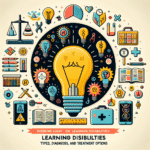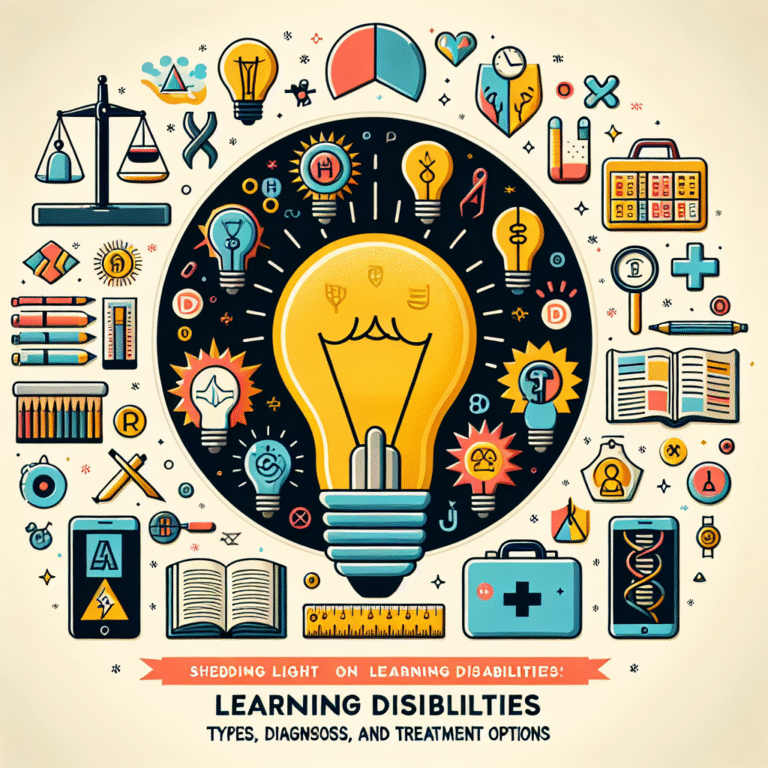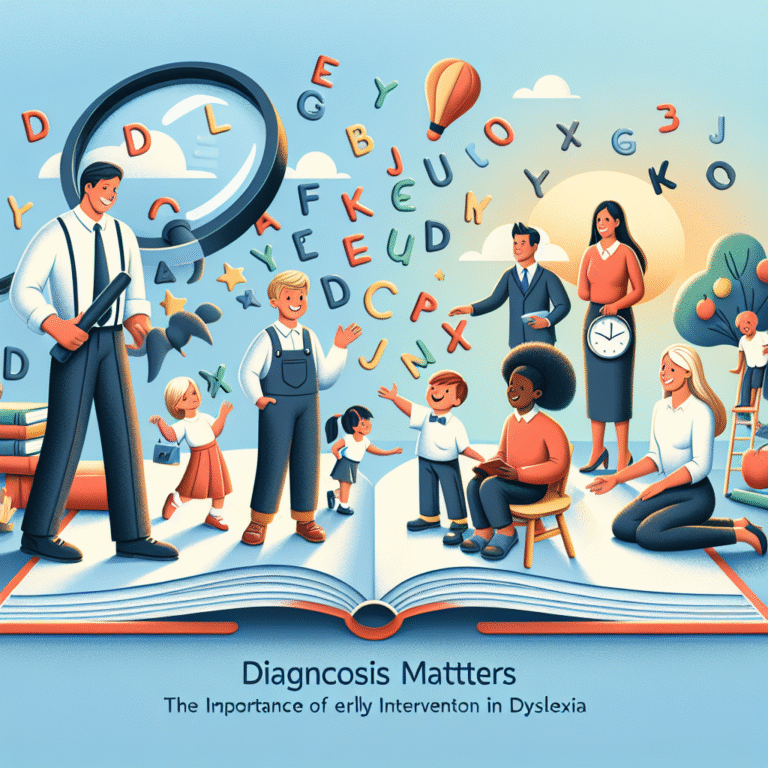
10 Essential Warning Signs of Learning Disabilities in Children: What to Look For
Introduction
Navigating the early years of childhood is a journey filled with milestones, laughter, and learning. As parents, caregivers, and educators, we cherish the moments when children take their first steps, form their first words, and grasp the fundamentals of reading and math. However, what happens when those seemingly ordinary milestones become challenging or elusive? Understanding the 10 warning signs of learning disabilities in children: what to look for is crucial in fostering a supportive environment that cultivates their potential.
Learning disabilities affect millions of children worldwide, yet they are often under-recognized and misunderstood. By identifying these signs early on, you can provide the necessary support and interventions, turning potential struggles into success stories. In this article, we will delve into the critical indicators that may suggest a learning disability and empower you to advocate for the children in your care.
Understanding Learning Disabilities
Before diving into the specific signs, it’s essential to understand what learning disabilities entail. Learning disabilities are neurologically-based processing problems that can hinder a child’s ability to read, write, speak, do math, or process information. They’re not indicative of intelligence; many children with learning disabilities possess average or above-average intelligence but face challenges in specific areas of learning.
Learning disabilities can manifest in various forms, including dyslexia (reading difficulties), dyscalculia (math difficulties), and dysgraphia (writing difficulties). Awareness of the 10 warning signs of learning disabilities in children: what to look for can make a significant difference in how early interventions are approached.
1. Difficulty with Reading
Reading is a fundamental skill that impacts a child’s academic and personal life. If a child consistently struggles to recognize letter sounds, decode words, or understand what they read, this might be a crucial sign.
Case Study
Emma, a 7-year-old, loves storytime but often struggles to read even simple words. Her teachers noted that she frequently confuses "b" and "d," making reading tasks frustrating for her. This early sign indicated that Emma might have dyslexia.
Analysis: Early recognition of reading difficulties can lead to interventions such as phonics-based tutoring, improving her confidence and abilities in reading.
2. Trouble with Mathematical Concepts
If your child has persistent difficulty grasping basic math concepts, this could be another warning sign. Symptoms may include trouble with counting, basic operations, or understanding math-related vocabulary.
Case Study
Liam, a 9-year-old, often struggles to complete math homework. While he can do basic arithmetic verbally, transferring that knowledge to paper poses a challenge. He shows frustration in math class, often avoiding problem-solving tasks.
Analysis: Identifying Liam’s challenges early could lead to specialized math tutoring focusing on hands-on learning experiences.
3. Challenges with Writing
Children with writing difficulties may have problems forming letters correctly or organizing their thoughts on paper. Dysgraphia is often characterized by messy handwriting, inconsistent spacing, and difficulty with spelling.
Case Study
Sofia, age 8, loves to tell stories but finds it difficult to put her thoughts on paper. Her sentences are often incomplete, and her handwriting is barely legible.
Analysis: Early intervention can include occupational therapy or digital tools that help children express their ideas more effectively.
4. Difficulty Following Directions
Children with learning disabilities may find it challenging to follow multiple-step instructions. If a child requires frequent repetition or clarification, this can be a significant warning sign.
Case Study
Jacob, a 6-year-old, often forgets steps in activities at school. During a simple instruction to clean up his toys, he often leaves half of them behind, which frustrates his teachers.
Analysis: Jacob’s difficulties may indicate issues with processing verbal information, suggesting the need for clearer, simplified instructions.
5. Poor Memory and Retention
Difficulty in remembering names, phrases, or learned material can signal a learning disability. Children may also struggle with recalling information during tests or discussions.
Case Study
Mia, a 10-year-old, has great difficulty remembering spellings and historical facts. Her interactions show that even after repeated exposure, she struggles to retain new information.
Analysis: Mia could benefit from memory-enhancing techniques, such as visual aids or mnemonic devices.
6. Lack of Focus and Attention
While many children can be impulsive and easily distracted, persistent inattention could indicate a learning disability. This is particularly true if it affects their academic performance or poses safety concerns.
Case Study
Noah, age 7, often appears lost during class discussions and tends to lose track of assignments. His inability to focus has been noted by multiple teachers.
Analysis: Assessing Noah for attention-related challenges could be key to implementing strategies that foster sustained focus.
7. Social Interaction Challenges
Children with learning disabilities might find it difficult to communicate effectively or to understand social cues. They may also struggle to maintain friendships or resolve conflicts.
Case Study
Lila, a 9-year-old, often misinterprets her peers’ intentions, leading to conflicts on the playground. Her parents note that she struggles to understand sarcasm or humor.
Analysis: Social skills training can provide Lila with tools needed to navigate her social environment more effectively.
8. Emotional and Behavioral Issues
Learning disabilities can often lead to frustration, anxiety, or low self-esteem, which may manifest through behavioral challenges. Parents and teachers might notice increased irritability or withdrawal.
Case Study
Ethan, aged 8, displays signs of anxiety surrounding schoolwork, often crying when faced with assignments, leading to behavior problems in class.
Analysis: A supportive approach that includes counseling and emotional support can help Ethan regain confidence.
9. Lack of Organizational Skills
Children with learning disabilities may struggle with organizing their schoolwork, belongings, or daily tasks. They may frequently lose homework or forget to bring necessary materials to school.
Case Study
Isabella, a 10-year-old, consistently misplaces homework and school supplies. Despite reminders, she often arrives at school without necessary books.
Analysis: Teaching Isabella organizational strategies and utilizing checklists can mitigate these challenges.
10. Inconsistent Performance
Inconsistent academic performance can be a telltale sign. A child might excel in one subject while facing challenges in another, raising concern about learning disabilities.
Case Study
Oliver, age 11, excels in art but struggles with language arts. Teachers and parents are puzzled by the disparity in performance across subjects.
Analysis: Comprehensive evaluations can determine if Oliver has a specific learning disability impacting his performance in language arts.
Conclusion
Recognizing the 10 warning signs of learning disabilities in children: what to look for is essential for fostering an environment that promotes growth and support. Early intervention can make a significant difference in a child’s educational journey, enabling them to succeed academically and socially.
If you suspect a child may be experiencing difficulties, reaching out to educational professionals, psychologists, or support groups can provide valuable insights and help create tailored intervention plans. Remember, identifying these signs is not just about labeling a child; it’s about unlocking their potential and paving the way for a brighter future.
FAQs
What are learning disabilities?
Learning disabilities are disorders that affect the brain’s ability to receive, process, store, and respond to information. They can impact reading, writing, math, and even social skills.
How are learning disabilities diagnosed?
Diagnosis typically involves a combination of observations, standardized tests, assessments by educational professionals, and input from parents and teachers to evaluate areas of difficulty.
Can a child with learning disabilities succeed academically?
Absolutely! With early intervention, tailored educational strategies, and support, children with learning disabilities can thrive academically and develop essential life skills.
What should I do if I suspect my child has a learning disability?
Contact your child’s teacher or school counselor to express your concerns. They can guide you through the evaluation process and provide resources for support.
Are learning disabilities hereditary?
Research indicates that learning disabilities can run in families, but environmental factors, such as exposure to toxins or inconsistent schooling, can also play a role.
Where can I find resources for supporting children with learning disabilities?
Numerous organizations provide valuable resources for parents and caregivers, including the Learning Disabilities Association of America and Understood.org, which offer articles, assessments, and community support.
By bringing awareness to these 10 warning signs of learning disabilities in children: what to look for, you can play an instrumental role in ensuring that all children have the opportunity to achieve their full potential. The journey may be challenging, but the rewards of understanding and support are immeasurable.









